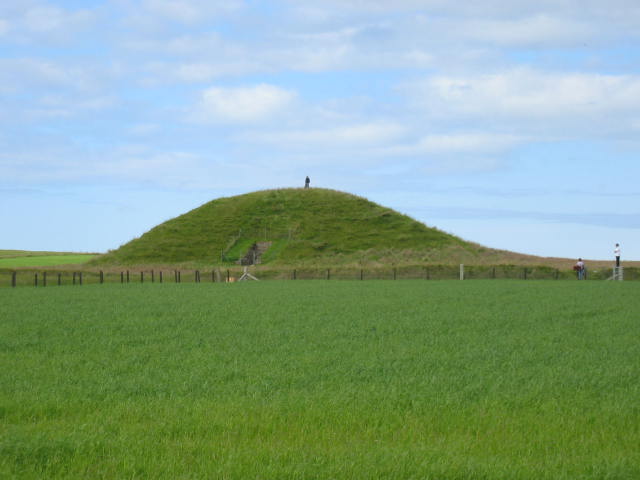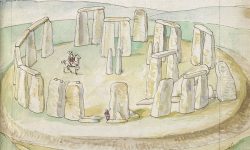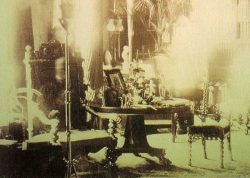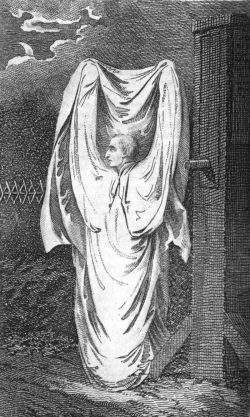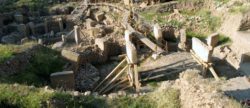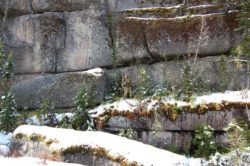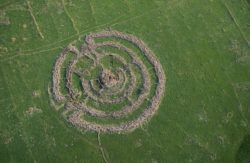Maeshowe the Megalithic Mound in Scotland
Nestled on the Orkney Islands of Scotland, Maeshowe is one of the most remarkable prehistoric sites in the British Isles.
This ancient structure, which dates back to around 2800 BCE, is a Neolithic chambered tomb that has captivated archaeologists and visitors alike with its historical significance and enigmatic features.
The Structure of Maeshowe
Maeshowe is a large, rectangular mound that houses an intricately designed passage tomb. The tomb’s main chamber is constructed from massive sandstone slabs, which were carefully arranged to create a precise, almost architectural space.
The passage leading to the central chamber is narrow and low, designed to guide individuals into the tomb in a manner that suggests ritualistic purpose.
The main chamber itself is spacious, with enough room for several people to gather. It is surrounded by smaller side chambers, which were likely used for additional burials or ceremonial purposes.
The tomb is aligned with the setting sun during the winter solstice, which suggests that the builders may have been keenly aware of the sun’s movement and its significance in their religious or agricultural calendar.
The Significance of Maeshowe
Maeshowe is part of a larger group of Neolithic monuments on the Orkney Islands, which also includes the famous Ring of Brodgar and Skara Brae.
These sites are often collectively referred to as the “Heart of Neolithic Orkney” and have been designated a UNESCO World Heritage site due to their historical and cultural importance.
Maeshowe’s primary function was likely as a burial site. The Neolithic people of the Orkney Islands believed in an afterlife, and tombs like Maeshowe were used to house the remains of the deceased.
The structure’s alignment with the winter solstice could suggest a connection to death and rebirth, marking a symbolic passage between the world of the living and the dead.
The Viking Graffiti
One of the most fascinating aspects of Maeshowe is the Viking graffiti that adorns the inner walls of the tomb. During the 12th century, Norsemen, who had a significant presence in the Orkney Islands, broke into the tomb and left behind a series of runic inscriptions.
These markings provide a glimpse into the Viking period in Orkney and are among the finest examples of runic writing found in the British Isles.
The Vikings’ presence in the tomb has added an additional layer of intrigue to Maeshowe, bridging the gap between two distinct periods of history.
The graffiti includes personal messages, curses, and even references to Viking legends, revealing the cultural and social dynamics of the time.
Modern-Day Maeshowe
Today, Maeshowe remains one of Scotland’s most fascinating archaeological sites, drawing visitors from around the world. Guided tours allow visitors to explore the tomb and learn about its construction, history, and significance.
Modern technology has also enhanced the experience, with virtual tours and detailed explanations of the monument’s design and the surrounding landscape.
Maeshowe’s enigmatic nature, from its architectural precision to its connection with ancient astronomical events, continues to spark the imagination of scholars and visitors.
The inclusion of Viking graffiti offers a unique historical intersection that further enhances the tomb’s mystique.
Maeshowe is not only a testament to the engineering prowess of the Neolithic people but also a powerful reminder of the deep cultural layers that shaped Scotland’s past.
Maeshowe Remains a Mystery
Maeshowe is an extraordinary and mysterious monument that offers a window into Scotland’s ancient history.
Its impressive structure, alignment with the solstice, and connection to both Neolithic and Viking cultures make it an important site for understanding the spiritual and cultural practices of past civilizations.
As both an archaeological treasure and a symbol of the Orkney Islands’ rich heritage, Maeshowe continues to stand as a lasting reminder of Scotland’s fascinating prehistoric and medieval past.
